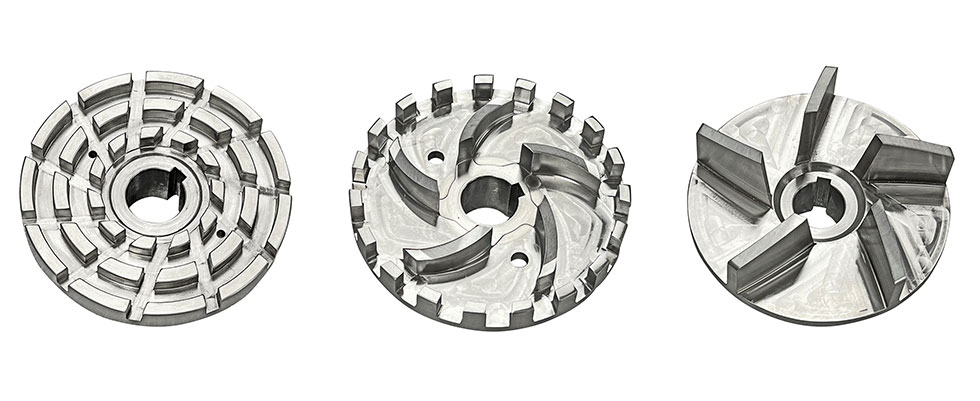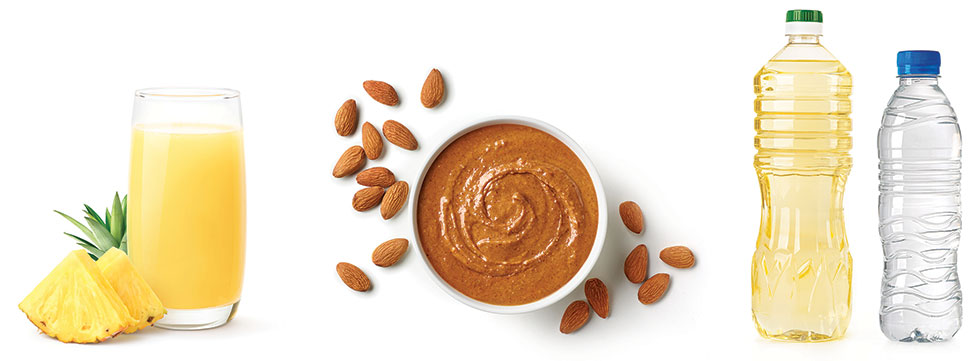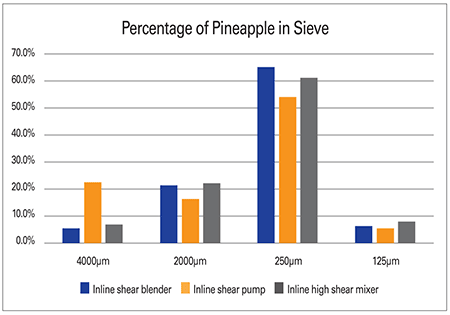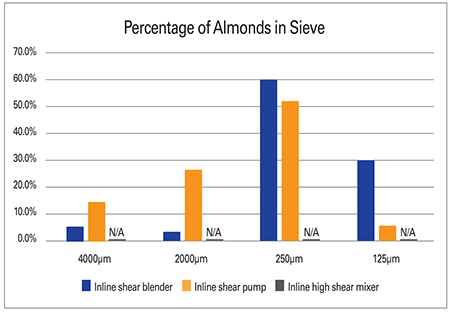
In the mixing and blending industry, there are several different types of pumps and mixers used to reduce, blend and emulsify food products. To get a better understanding of how each one performs, as well as of the differences and benefits, tests were run to compare the three most common inline blending styles currently offered in the industry.
How Does an Inline Blender Work?
An inline blender is piped “in line” with the process. This means the product must leave the holding tank or hopper, then travel through a pipeline to the blender, and go back through a pipe run to its destination.

The three inline blenders used in this comparison test are considered rotor/stator style, with shear teeth or an impeller that passes by a stationary shear implement at a high speed and close clearance.
An inline shear blender uses several rows of shear teeth.
An inline shear pump uses fewer rows of teeth but adds a central impeller to increase throughput.
An inline high shear mixer uses a stout impeller passing by a slotted screen at the tightest of clearances.
Each blender design works to impart shear on the product passing through, as opposed to simply transferring the product to the next part of the process. For the sake of consistency, all three test blenders are 10 horsepower (hp) models.
Testing Inline Blender Styles for Strengths & Weaknesses
To illustrate the performance of each piece of equipment, three sample products were selected: pineapples, almonds and oil/water.

Pineapple: In the first test, pineapple was used because it is a soft, fibrous product representative of many common blending applications, from fruit purees to soups and salsas. The test involved having 100 pieces of pineapple placed in a hopper that were induced through the mixer or pump in a single pass and deposited in a collection tank. When the pump reached full speed, the hopper was opened, and the pineapple tidbits were induced into the line. Once all the tidbits were present, the hopper valve was closed, and the pump was turned off. The collection tank was then emptied through a sieve. The resulting mass from each sieve was weighed for comparison.
Almond: For the second test, almonds were chosen because they are tougher and can show how each blender handles hard particle reduction. One pound of whole almond nuts was placed in a hopper. As with the first test, the product was induced into the line when the motor reached full speed. The collection tank was then drained into a sieve. The results were then weighed for comparison.
Oil/water: The third test was a basic oil/water emulsion. This test helps demonstrate how each blender can be used to prepare salad dressings and many different types of sauces. It involved each pump recirculating a 10-gallon mixture containing 70% canola oil and 30% water for a set duration of time. Once the time was up, a sample was collected and placed in front of a camera taking pictures on a timelapse to check the rate at which the oil and water separated.
Test Results for Inline Blending Technologies
For the pineapple and almond test, four different mesh sieve sizes, from 5 mesh (4,000 micron) to 120 mesh (125 micron), were used to sort the resulting blended product and generate a small sample particle size distribution. This range of sieve sizes shows how many large particles pass through the blender unharmed. It also reveals what grade of fines can be generated in a single pass with each blender.

Pineapple: When the mass of the pineapples was sieved, the mass in each sieve was recorded. The inline shear blender and the inline shear pump performed similarly. The most amount of material was collected in the 250 micron sieve, with the next highest amount being in the 2,000 micron sieve, followed by the 4,000 micron sieve. The least amount of material was collected in the 125 micron sieve. The inline high shear mixer had different results for pineapple. The most material was collected in the 4,000 micron sieve, with the second most amount of material being collected in the 250 micron sieve. The next highest amount of material was collected in the 2,000 micron sieve, and the least amount of material was once again the 125 micron sieve.
Almond: The results from the almond test were different. The inline shear blender had the most amount of material in the 250 micron and the next highest in the 125 micron sieve. The sieve with the next highest amount of material was the 4,000 micron sieve, and the sieve with the smallest amount was the 2,000 micron sieve. The inline shear pump also had different results. The sieve with the most material was the 250 micron-sieve. This was followed by the 2,000 micron sieve, then the 4,000 micron sieve, and lastly, the
125 micron sieve. The inline high shear blender was unable to process the almonds.
Oil/water: The emulsion test proved to have interesting results. The inline shear pump showed the most emulsion of the oil and water after the allotted time. The next best was the inline high shear mixer, and the inline shear blender produced the least-successful emulsion.
What Do the Inline Blender Comparison Results Mean?
The data collected shows a clear difference in ideal application and performance between the different blenders/mixers.
The inline shear blender performed well with the pineapple tidbits and almonds. While excelling at particle size reduction, this blender had the least amount of emulsion due to a lower pumping rate in a given time.
The inline shear pump had good results on every test. It was effective at reducing the pineapple tidbits and almonds. Due to its high flow rate, it also had a strong performance with the emulsion test, despite having a lower overall shear rate than the inline high shear mixer.
The inline high shear mixer was able to reduce the pineapple tidbits the best and did well on the emulsion test. However, it was unable to reduce the almonds due to clogging.
The tests highlight the importance of having a complete picture of a given application before selecting a blender or mixer. There is some overlap in the capabilities of different blender styles. However, the flow rate, time goal and product characteristics should all be carefully considered to select the most efficient blender or mixer for a project.

